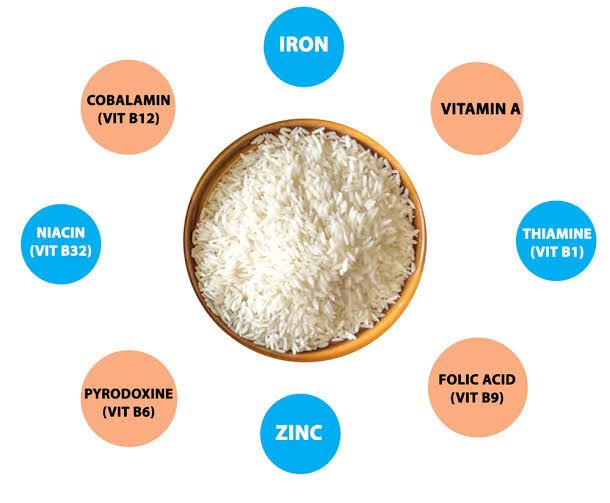About Rice fortification
- Fortification is the process of adding Fortified Rice Kernels (FRK), containing FSSAI-prescribed micronutrients (Iron, Folic Acid, Vitamin B12) to normal Rice in a ratio of 1:100 (Mixing 1 Kg of FRK with 100 Kg custom milled rice).
- Fortified rice is nearly identical to traditional rice in aroma, taste, and texture. This process is done in the rice mills at the time of milling of rice.
- It is a cost-effective, culturally appropriate strategy to address micronutrient deficiency in countries with high per capita rice consumption.
Process of Rice Fortification
Rice Fortification is a 2-step process – (1) Production of Fortified Rice Kernels (FRK) (2) Blending of rice with FRK
Processes used for rice is fortification
- Various technologies, such as coating, dusting, and ‘extrusion’, are available to add micronutrients to regular rice.
- Adding micronutrient technology involves the production of Fortified Rice Kernels (FRKs) from a mixture using an ‘extruder’ machine. It is considered to be the best technology in India.
- Dry rice flour is mixed with a premix of micronutrients and water is added to this mixture, which is then passed through a twin-screw extruder with heating zones.
- Kernels similar in shape and size to rice are produced, which must “resemble the normal milled rice as closely as possible”.
- The kernels are dried, cooled, and packaged. FRK has a shelf life of at least 12 months.
- The kernels are blended with regular rice to produce fortified rice. Under the Ministry’s guidelines, 10 g of FRK must be blended with 1 kg of regular rice.
Nutrients of Fortified Rice

According to FSSAI norms, 1 kg of fortified rice will contain the following: iron (28 mg-42.5 mg), folic acid (75-125 micrograms), and vitamin B-12 (0.75-1.25 microgram).
Also read,
- Difference Between Procedure Established by Law and Due Process of Law
- Difference Between Fifth Schedule And Sixth Schedule
- Top 50 Science MCQs For Competitive Exams
- Know About The Different Financial Sector Regulators In India
- Vedic Literature
- Vedic Period
- Download the pdf of Important MCQs From the History Of Ancient India
- List Of Important Inscriptions In India








